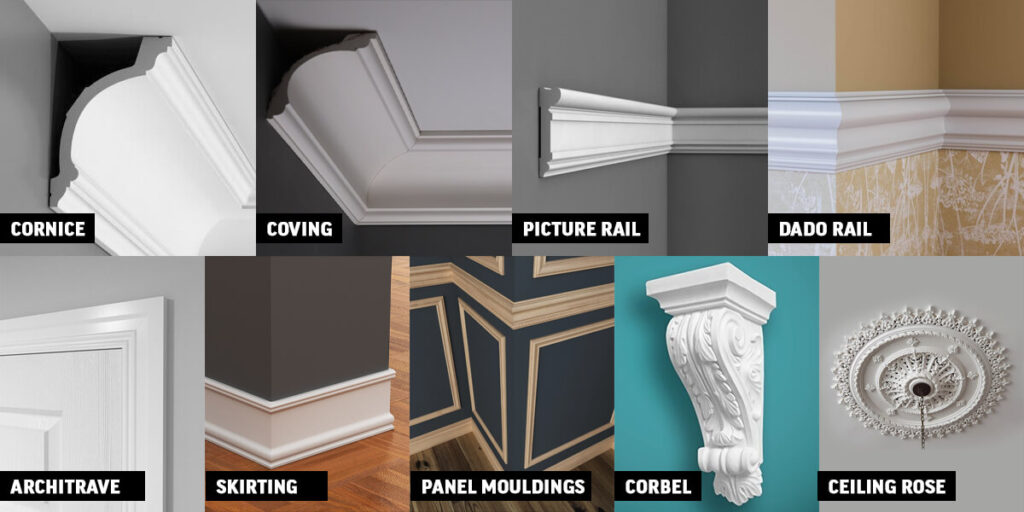
What Is Another Name for Crown Molding Alternative Terms Explained
Crown molding is a popular and timeless feature in interior design, but did you know that it goes by several other names depending on the region, style, or application? Understanding these alternative terms can help you communicate more effectively with designers, builders, and contractors, or just enrich your design vocabulary. In this blog post, we’ll explore other names for crown molding and explain their meanings and contexts.
🎨 What Is Crown Molding?
Before diving into alternative names, let’s briefly define crown molding. Crown molding is a type of decorative trim used at the junction of walls and ceilings. It’s often used to add elegance and polish to a room, covering any gaps between the wall and the ceiling and enhancing the overall aesthetic of the space.
While “crown molding” is the most commonly used term, various other names exist that refer to similar types of molding. Some of these names refer to specific styles, designs, or even regional preferences. Here are a few of the most common alternative terms for crown molding.
🌍 Alternative Names for Crown Molding
1. Cornice Molding
One of the most common alternatives for crown molding is cornice molding. In fact, “cornice” and “crown molding” are often used interchangeably, though they technically refer to slightly different things in some contexts.
- Cornice generally refers to the upper portion of a building’s exterior, specifically the decorative trim at the top of a wall. However, when used in interior design, cornice molding refers to similar decorative trim inside the home. The term is more frequently used in British English, while Americans typically use “crown molding.”
Example: The room features elegant cornice molding around the ceiling.
2. Ceiling Trim
In some contexts, ceiling trim may be used as a catch-all term for crown molding. It highlights the fact that the molding is installed at the junction between the walls and the ceiling. This term is more generic and can be used to refer to a variety of trim options, including crown molding, although it may not have the same decorative connotation.
Example: The room was finished with beautiful ceiling trim to enhance its classic design.
3. Coving
The term coving is often used in the U.K. and refers to a type of molding that curves inward, forming a smooth transition between the wall and ceiling. While coving can sometimes refer to a more rounded or curved profile, it is often used interchangeably with crown molding. However, coving is typically less ornate than traditional crown molding.
Example: The living room was decorated with modern coving to create a seamless look.
4. Chair Rail Molding (in Some Contexts)
Though chair rail molding is technically a separate form of trim, it sometimes gets confused with crown molding because of its positioning along walls. However, chair rails are typically installed at the midpoint of the wall to protect the wall from chair backs, while crown molding is installed along the top edge of the wall.
Example: In formal dining rooms, you may see chair rail molding combined with crown molding for an added touch of elegance.
5. Decorative Molding
Some people may refer to crown molding simply as decorative molding or decorative trim. This term is broad and encompasses a variety of trim types, including crown molding, baseboards, wainscoting, and more. It’s used to indicate any trim that serves a purely aesthetic purpose.
Example: The room featured intricate decorative molding that gave the space a luxurious feel.
💡 Additional Terms for Specific Styles or Materials
Some alternative terms for crown molding are associated with the specific materials or styles used:
6. Wood Molding or Timber Molding
If your crown molding is made from wood, it might be referred to as wood molding or timber molding. This name highlights the material used in crafting the trim and is often used to describe traditional wooden moldings.
Example: The room was finished with rich wood molding for a classic and timeless appearance.
7. Plaster Molding
For those who prefer a more traditional look, plaster molding may be used to describe crown molding made from plaster, which is a heavier and more customizable material compared to other options. Plaster moldings are often used in historic homes or more formal settings.
Example: The ornate plaster molding in the ballroom added to the grandeur of the space.
8. Polyurethane Molding
In modern construction, polyurethane molding is a popular alternative due to its lightweight, durable, and cost-effective nature. This term highlights that the molding is made from polyurethane foam, which can be easily molded into intricate shapes and is ideal for quick installation.
Example: For a budget-friendly yet stylish design, we opted for polyurethane molding around the ceiling.
🔨 Conclusion
In conclusion, while crown molding is the most commonly used term, there are several alternative names that refer to similar decorative trim used in interior design. Depending on where you are, your design preferences, or the material you choose, you may encounter terms like cornice molding, ceiling trim, coving, chair rail molding, or decorative molding.
Regardless of what you call it, crown molding and its alternatives all serve a common purpose: enhancing the elegance and beauty of your space with decorative trim. Whether you choose a classic wood molding, a budget-friendly polyurethane, or an ornate plaster molding, these trims provide the finishing touch that transforms any room into something special.